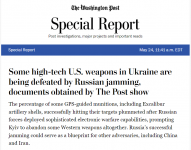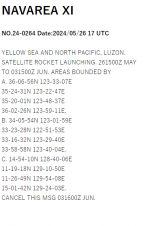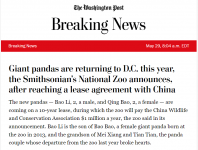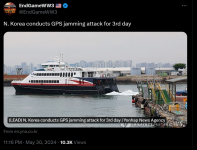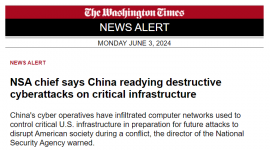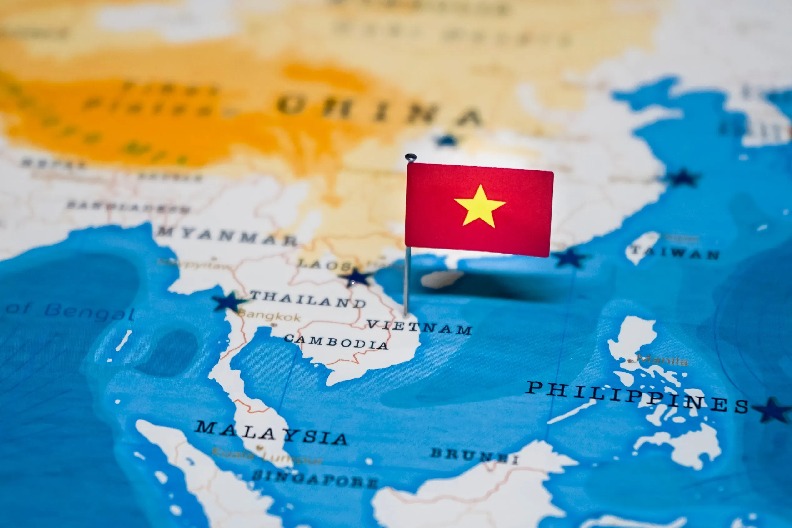jward
passin' thru
Yes, Japan Will Defend Taiwan
Japan officially maintains a policy of strategic ambiguity toward the issue of Taiwan’s sovereignty. Taiwan’s security, however, is an unambiguous and essential interest in Tokyo. Should Beijing decide to unify Taiwan by force, Japan’s strategic interest, deep affinity for the Taiwanese, and security alliance with the United States will compel Tokyo to defend its southern neighbor. For Japan, peace in the Taiwan Strait is a matter of national survival.
Under Xi Jinping’s leadership, the People’s Liberation Army (PLA) has undergone a rearmament on a scale unseen elsewhere in the 21st century. Beijing is accelerating its military development to have the capabilities required to forcefully unify Taiwan by 2027. While 2027 is hardly a set date for invasion, it does point to the sense of urgency Beijing has toward wielding credible options to resolve the so-called Taiwan issue.
Japan is cognizant of these developments and explicitly affirmed Taiwan’s central importance to Japanese security in three national-level strategic documents released in recent years.
Japan’s 2022 National Security Strategy states: “Taiwan is an extremely important partner and a precious friend of Japan, with whom Japan shares fundamental values… Peace and stability across the Taiwan Strait is an indispensable element for the security and prosperity of the international community…” Here, Tokyo attaches great importance to its relationship with Taiwan and affirms the island is a prime security interest of the Japanese government.
The 2022 National Defense Strategy goes on to say:
Tokyo is clearly worried that the PLA Navy (PLAN) may establish a routinized presence closer to Japanese interests. Tellingly, the document labels Chinese actions against Taiwan as a “threat” to Japanese nationals.It is believed that through the series of activities around Taiwan, China seeks to create a fait accompli where (the) Chinese military is continuously operating and improve its actual combat capabilities. Moreover, China has launched nine ballistic missiles on August 4, 2022, five of which landed within Japan’s Exclusive Economic Zone (EEZ). This was perceived as a threat to local residents.
Without explicitly naming China, the Defense Buildup Program report indicates how Tokyo plans to address these concerns. It calls for Japan to develop modern combat capabilities to deter “unilateral changes to the status quo by force” and plans to develop distributed logistics networks in its southwestern islands – Japan’s closest territory to Taiwan.
These excerpts are not transient pro-Taiwan remarks by current or former Japanese officials. Rather, these are official statements used to inform Japanese defense resourcing decisions.
To fully grasp why Taiwan is essential to Japanese security, it is important to understand geography’s role in shaping Tokyo’s fundamental strategic interests. Taiwan sits in the middle of the Taiwan and Luzon Straits, two strategic sea lines of communication (SLOCs) upon which Japan depends for its economic livelihood and by extension – its survival.
Japan ranks among the world’s highest energy consuming nations. In 2022, Japan relied on imports for 97 percent of its energy generation, primarily consisting of crude oil and liquified natural gas (LNG). That same year, Japan surpassed China to become the world’s largest importer of LNG, despite a 3 percent decrease in energy imports. Crucially, 90 percent of Japan’s energy imports are sourced from the Middle East and transported via maritime shipping, of which 80 percent travels through the Taiwan Strait. These figures underscore ensuring free and unimpeded access to these vital strategic resources is of paramount importance for Tokyo.
Enter China.
Beijing has not been shy about its intent to one day unify Taiwan and establish Communist Party rule over the self-governing democratic island. Taiwan lies 111 kilometers east of the Japanese-administered Yonaguni Island and 170 km east of the disputed Senkaku/Diaoyu Islands. A Taiwan invasion risks spill-over over into Japanese territory, attacks against U.S. basing, and disruptions to commercial shipping.
A PLA officer training manual titled “Japanese Air Self-Defense Force” minced no words about how Beijing understands Taiwan’s strategic value to Japan. It stated:
If you are a Japanese policymaker, these are fighting words.As soon as Taiwan is reunified with Mainland China, Japan’s maritime lines of communication will fall completely within the striking ranges of China’s fighters and bombers… Japan’s economic activity and war-making potential will be basically destroyed… blockades can cause sea shipments to decrease and can even create a famine within the Japanese islands.
As recently as 2022, Japanese public sentiment did not strongly favor fighting China, suffering combat losses, or participating in a Taiwan conflict. No one can know for sure how the Japanese public will feel until their views are tested by a crisis, but the last two years appear to have decisively shifted Japanese views vis-à-vis China.
For example, a January 2024 Japanese government poll found 87 percent of respondents held anti-China sentiments, an all-time high. A 2022 Pew report showed that at least 61 percent of Japanese have held unfavorable views of China for 19 consecutive years.
Meanwhile, a separate Pew poll from August 2023 found 82 percent of Japanese hold favorable views of Taiwan – the highest among the 24 nations surveyed and nearly 20 percent higher than the United States. These polls suggest that while select policy preferences may fluctuate, broader underlying trends in sentiment provide Tokyo a sturdy foundation to rally support for Taipei should the need arise.
Japan’s ruling Liberal Democratic Party faces political and legislative constraints on its ability to transition to a wartime footing. For example, the decision to authorize lethal force requires a “threat to Japan’s national existence.” This is vague. But we should consider that Japan’s Self-Defense Forces (SDF) can contribute to Taiwan’s defense without venturing beyond Japanese territory or directly engaging in combat with China. In other words, the authorization of lethal force is not required for Japan to defend Taiwan.
Japan’s modern military and numerous southern islands afford Tokyo a range of options to contribute to space, air, surface, or subsurface warfighting domains. Outside of direct combat, the SDF could provide real-time intelligence, targeting support, logistical sustainment, or humanitarian assistance. Several considerations including U.S. force posture, the need to protect maritime boundaries, and the desire to geographically contain a conflict to the south may all factor into Tokyo’s employment of the SDF.
Behind all decisions relating to Japanese defense is Tokyo’s iron-clad security alliance with the United States. A 2023 war game simulation conducted by the Center for Strategic and International Studies in Washington, D.C. concluded that Japan’s participation in a Taiwan conflict, particularly allowing U.S. combat basing, was a decisive factor in whether Taiwan survives, and Washington achieves its objectives. Luckily, there is an agreement ensuring this exact support.
In 1969, the United States and Japan issued a joint statement legally obligating Tokyo to permit U.S. combat basing in its territory should Taiwan come under threat in exchange for the administrative return of Okinawa. Commonly referred to as the “Taiwan Clause,” this effectively erases the illusion that the Japanese public or pro-Beijing officials have veto power over Tokyo’s decision to participate. The Japanese government undoubtedly understands that reneging on its commitment would mean the disintegration of the Japan-U.S. security alliance upon which so much rests.
Japan confronts a trifecta of security challenges: Russia to the north, North Korea directly to the west, and China to the south. Given this reality, it is not in Tokyo’s strategic interest to part ways with its most crucial security partner. Japan not only treasures its alliance with the United States, it is actively seeking a greater role within it.
Japan’s eagerness to assume greater burden sharing in the alliance indicates Tokyo has a strong vested interest in preserving the security status quo. The status quo – while most preferred – is far from optimal for Japan, meaning any substantive deviation would only worsen Tokyo’s confluence of security problems.
The loss of Taiwan means that China would be uncorked from the first island chain and free to roam. In the present day, PLAN “gray zone” pressure is largely confined to Japan’s southernmost islands. Japan maintains a forward defense posture that creates distance between the PLAN’s forward edge and Japan’s largest population centers. But in a scenario where Taipei falters, China assumes control over Taiwan’s air and sea space, enabling long-range air and naval weapons to hold a significantly greater portion of Japanese territory at risk.
China’s control over Taiwan’s SLOCs would afford Beijing significant leverage to threaten or disrupt Japanese energy imports and subsequently influence its domestic economy and politics. By choosing not to defend Taiwan, Japan can minimize short-term losses but risks the tremendous long-term cost of irreversibly weakening its regional security posture.
Japan will defend Taiwan because doing so is integral to its national security. The proper discussion of Japanese intervention should examine “how” not “if.” Accepting China’s control over Taiwan would effectively mean also accepting Japanese subordination to Beijing. If this prospect does not constitute a threat to Japan’s national existence, then nothing does.

Yes, Japan Will Defend Taiwan
For Japan, peace in the Taiwan Strait is a matter of national survival. A proper discussion of Japanese intervention should thus ask “how” not “if.”
thediplomat.com

